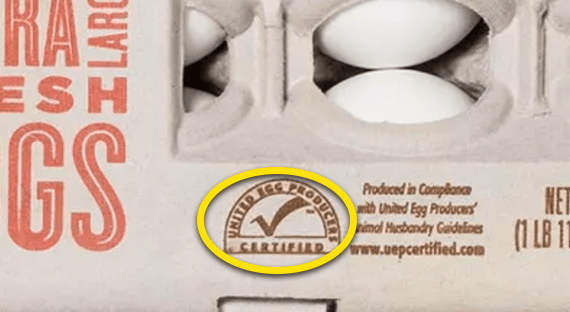Hens can be confined in wire cages (called battery cages) that provide less than half a square foot of space per bird—smaller than a sheet of 8½x11-inch paper. Birds housed in cages are not given a place to roost or nest —both important for the welfare of laying hens. Producers have to provide nesting spaces for cage-free birds that live in a chicken house, but perches are a low-priority requirement. Keeping ammonia levels (which come from animal waste and can harm human and animal health) down in the building is also a low-priority requirement. When hens are housed in crowded conditions and can't scratch and peck, they may become aggressive; beak trimming is allowed to minimize the harm they can inflict on each other. Hens don't have to have access to a pasture, run, or any other space. (If you see the United Egg Producers Certified seal with a "cage free" claim on an egg carton, it means that the hens were not confined in cages. However, it doesn't mean they had access to the outdoors.)
Egg producers must file quarterly compliance reports, and each farm is inspected annually by an independent certifying agency.

Consumer Reports takes a detailed look at the requirements, definitions, standards, and verification procedures behind food labeling seals and claims, and distills this information into CR ratings. Our goal is to inform and empower consumers so they can act to create demand for a healthier, safer food system.


























